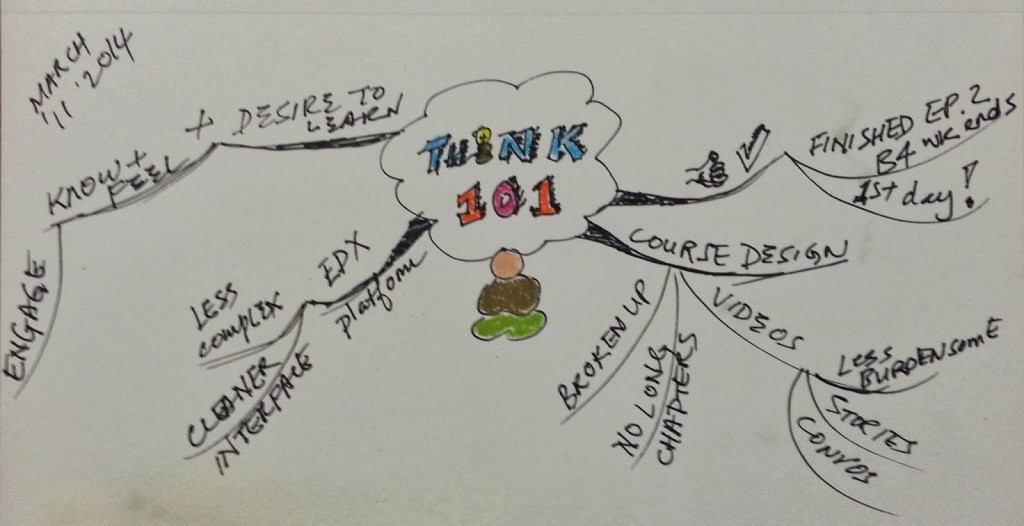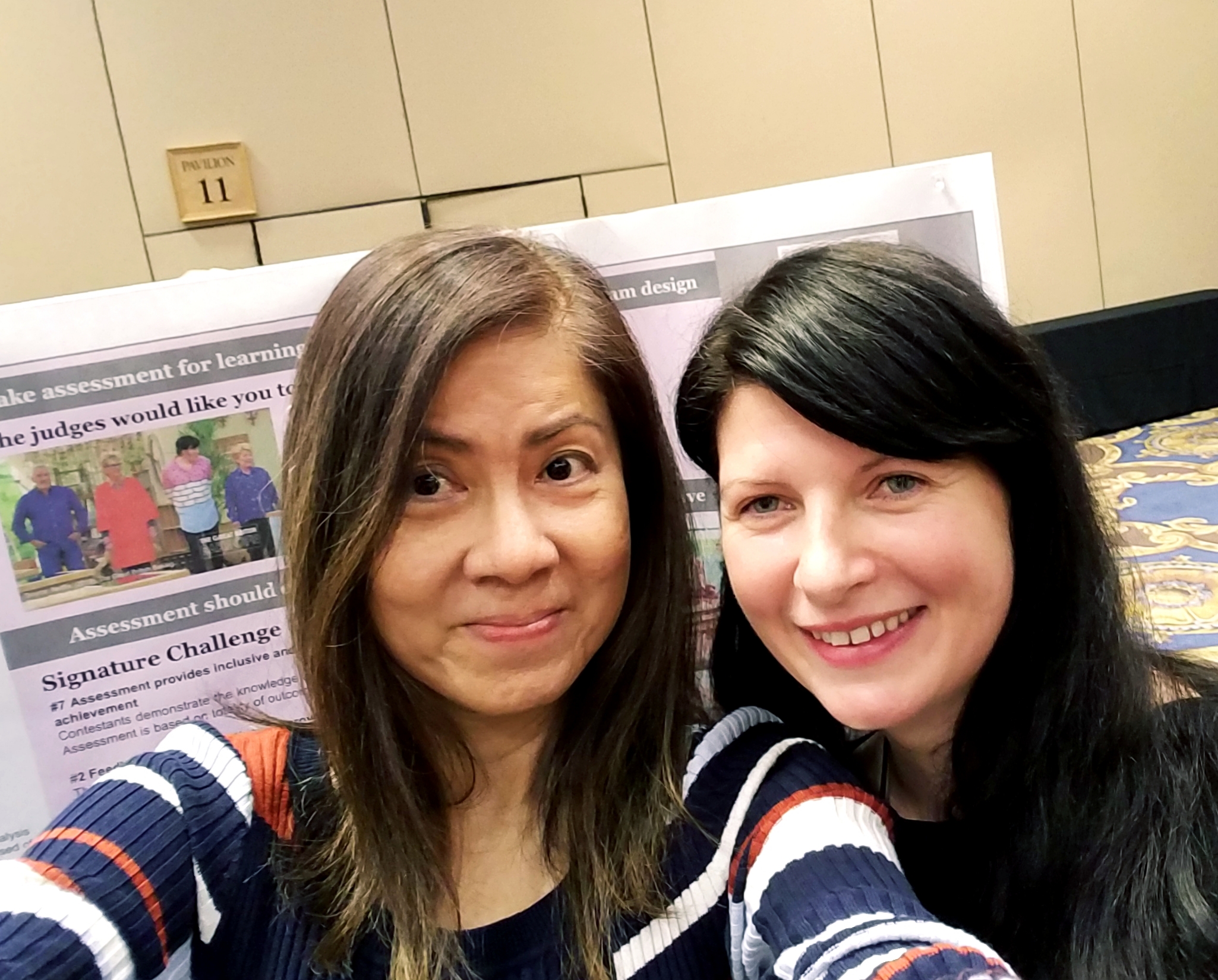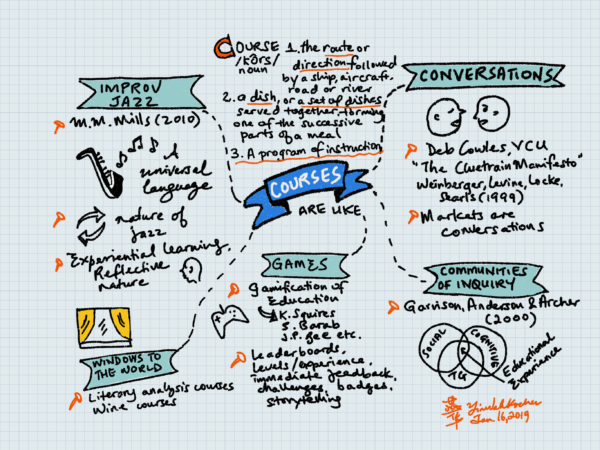Desiring to Learn is Not Enough by Itself
Here’s a reflective mindmap:
I have quite decided that four factors have probably helped make this MOOC a winner with me.
1. Affect.
There are many open-access courses and MOOCs available from several major players. Among those that I’ve been interested in, I’ve always tried to complete required readings, videos and quizzes. I typically drop out after 2 or 3 weeks despite the best of efforts and interest in the MOOC topic. The desire to learn alone did not see me through to completion. Yet there is something different about this course. There are interesting stories to hear. The content videos are not boring videos of talking heads. Nor do they last longer than 7-odd minutes. Phew! Authenticity and emotional engagement score.
2. Course Design.
I’ve mentioned the well-crafted content and reflective videos. Besides an understanding of user attention, the videos are filmed as conversations. People are talking to each other like in real life.
There are no long “required” chapters to read. I could “learn more” or “learn even more.” Words matter.
3. Platform Design.
Hands down, EdX is one of my two favorite MOOC platforms so far — the other is Stanford’s NovoEd platform where I completed the Crash Creativity course. There are drawbacks to EdX (e.g. close-captioning is beside the video instead of being layered over the video), but the interface is clean. I like simplicity.
4. Content.
Needless to say, how the mind works is one area that fascinates me. The course instructors have asked some provocative questions and revealed a bit of the findings. Apparently, 84 percent of some thousands of people believe that there are traditional and non-traditional health practices that are not being explored because pharmaceutical companies or scientists shun them (UQx course info, 2014).
Also, here are participant responses on what they think about, in one word:
We asked the 80,000 @Think101x students across the globe to pick one word to describe what they think about. pic.twitter.com/ZyOEYQT1jC
— Think101 (@Think101x) March 12, 2014
On-campus participants took part in a survey like us and were filmed (and hence seen) in a short segment. I’m curious as to how this on-campus segment is going to run throughout the course.
Notice I’ve ranked content last because that alone does not see me till the end, always.
To-Be-Improved
I believe we are always tweaking courses as they are being implemented. I hope they do something about the Courseware discussion board. It’s a one-column design; it’s not easy to interact with others when you can’t read their postings unless you scroll up and down frequently. This is why interaction with peers hasn’t contributed to my learning engagement as yet. In addition, we need a Twitter hashtag, not just a course Twitter account.
March 14, 2014: To clarify, there is a separate tab or section for Discussion where the discussion board has a different interface. It has two columns for easier interaction — for reading and sorting of comments.
Still, I can’t wait for Episode 3!



